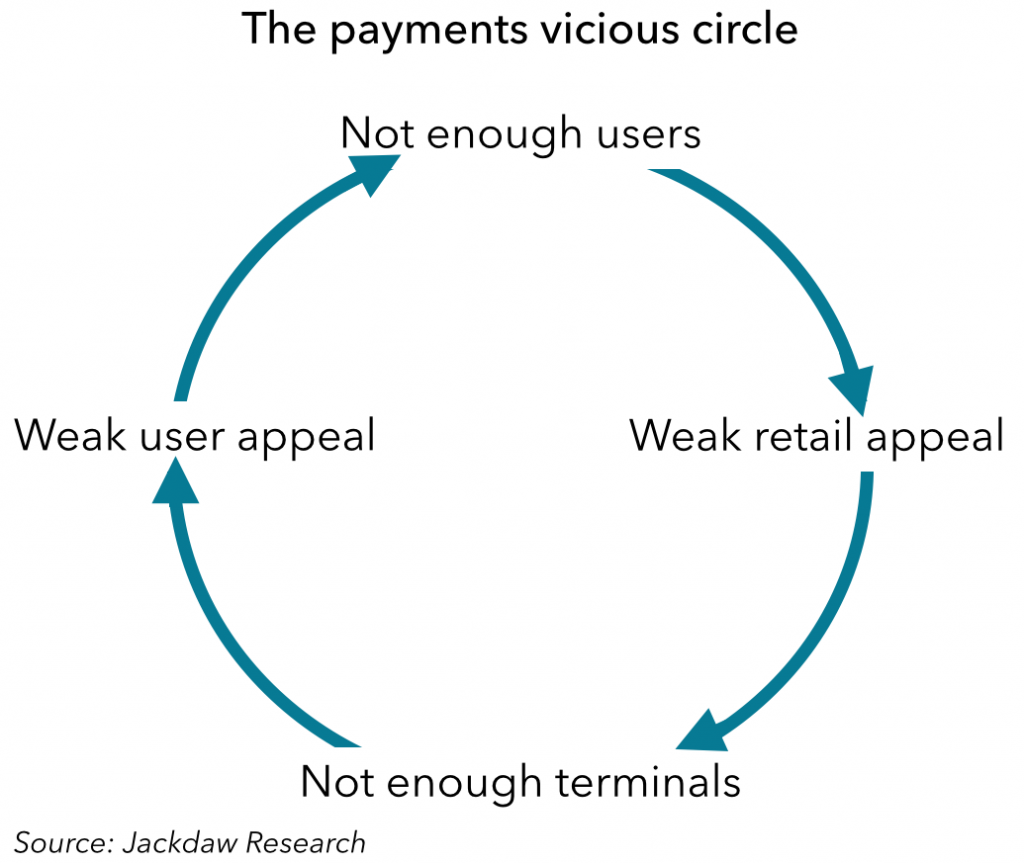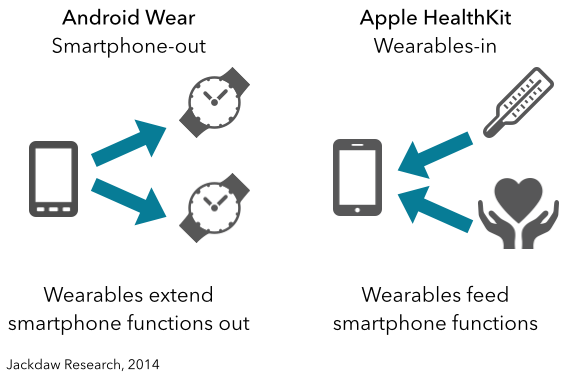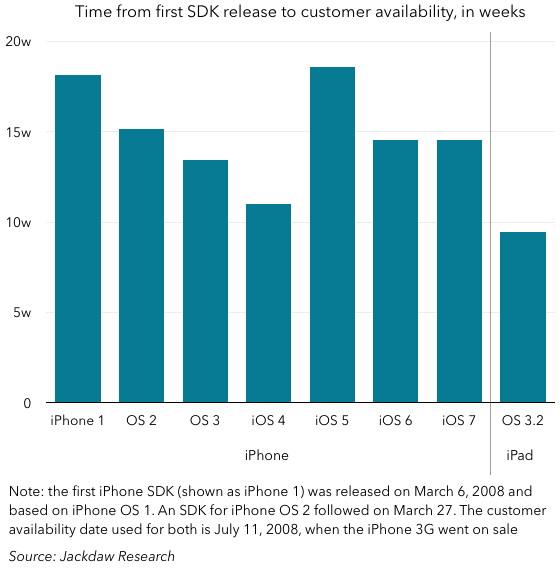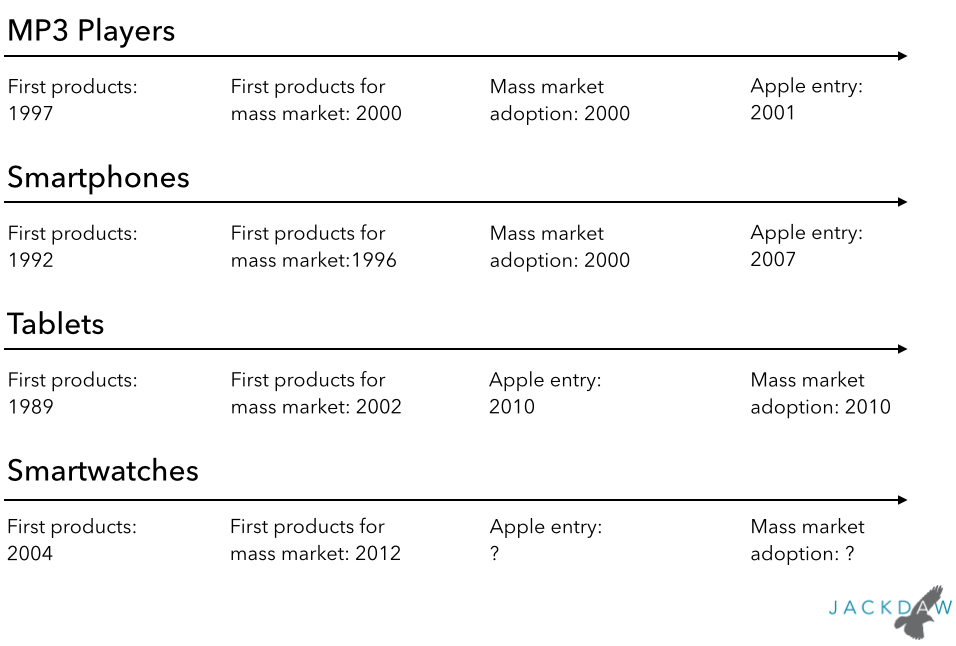Over the weekend, Snapchat (now Snap, Inc.) announced its video-recording glasses, Spectacles. In talking to reporters on Saturday and spending some time pondering the move, four main thoughts have been running through my brain. I think we’ll almost certainly spend a good amount of time on this week’s Beyond Devices Podcast discussing this, so look out for that episode on Thursday morning.
Two takes on hardware for immersive video
Firstly, it’s interesting to see Snap and Facebook both investing in more immersive video, while also making hardware investments in this space. However, they’ve chosen different focal points for their hardware:
- Facebook is encouraging people to use their smartphones to capture 360° photo and video, but has chosen to make its hardware investment on the consumption side (Oculus)
- Snapchat has made a hardware investment in a capture device for 115° video, but the consumption will happen on smartphones.
That reflects a broader strategic focus for each company, with Facebook focused not just on video but on owning the next big platform after missing out on owning smartphone hardware and operating systems, while Snapchat is redefining its identity (see below). Neither company, obviously, is precluded from eventually moving into the other hardware space over time either.
Snap Inc, the camera company
While speaking at a Columbia University startup event in April, Evan Spiegel first began referring to Snapchat as a camera company, and that was now obviously a setup for the Spectacles launch, which has been in the works for at least two and a half years, and Snap Inc has embraced this tagline as its official self-description now too. This redefinition makes sense – there have always been several ways to look at Snapchat: a content company, a social company, an app company, or a camera company. Of those, three still make sense as descriptors after the Spectacles announcement, but what Snap clearly doesn’t want to be seen as anymore is just an app company. But the camera identity makes in some ways the most sense – it’s the first thing users see when they open the app, and snapping and sharing pictures and video is clearly the central purpose of the company.
One of the things Snapchat has done amazingly well since its founding is evolving out of its original narrow pigeonhole into something much broader. Though known in its early years mostly for the ephemeral nature of the content shared through the platform, and thereby gaining a reputation as being somewhat shady, its identity is now very different. The additions of Stories, Discover, Lenses, and a variety of other features has turned it into something much broader, which consequently captures much more of its’ users time. Spectacles, though, are arguably the first addition to the portfolio that isn’t in and of itself about getting users to spend more time in the app, and that’s interesting.
Inevitable comparisons to Google Glass
You can’t launch a video-recording pair of glasses in today’s world without drawing comparisons with Google Glass. But the target demographic, the price point, the design, and the intent are all very different for Spectacles compared with Glass. In addition, the Snap team had the benefit of learning from what went wrong with Glass.
It’s also interesting to think about where the Spectacles technology came from – thanks to the Sony email hack, we know that Snapchat acquired Vergence Labs in March 2014 for around $15 million. Vergence sold video-recording eyeglasses under the Epiphany Eyewear brand, and actually launched before Google Glass. But there were some important differences between EE’s glasses and what Snap has now launched:
- The price ranged from $300-500 based on storage, versus Spectacles at $130
- The glasses required a USB connection to plug into a computer for uploading videos to a proprietary hub, from which content could be shared to various social networks, versus sharing over Bluetooth or WiFi direct to a phone running the Snapchat app
- The glasses had a subtler design, with just one camera discreetly tucked in the corner, versus Spectacles’ yellow-rimmed cameras in both corners.
Interestingly, though, Vergence had this quote on its website when asked about the differences versus Google Glass: “Glass appears to have a few more “electronics features” and we have more “eyewear features”.” This is a great summary of the difference between Snap’s Spectacles and Glass too – the former is a pair of sunglasses that records video, while the latter was technology strapped to your face. There’s definitely much less of a cyborg vibe to Spectacles. The Spectacles do own their role as cameras – those yellow rims are clearly intended to highlight the presence of the cameras, and lights will further highlight when you’re actually recording. Snap has obviously learned from the privacy concerns around Glass.
Why hardware?
The biggest question in mind throughout all this has been why Snapchat would undergo this transformation from an app company to an app plus hardware company, because that’s a tough transition to make. Consumer electronics involves industrial design, manufacturing, shipping and retail, break-fix capabilities, and much else besides, which an app company never needs to worry about. The business model is very different too – the incremental cost of serving an additional user with an app is close to zero, whereas the incremental cost of selling another unit of hardware is significant. Moreover, the vast majority of Snapchat’s end users have never paid it any money for anything in the past, and will now be asked to stump up $130. Given that for many of Snapchat’s users, their disposable income is probably best described as pocket money rather than a salary or even wages, that’s probably a tough sell.
Two obvious reasons present themselves: business model and differentiation. On the former front, Snapchat’s main business model has been advertising, so hardware revenue can provide a useful additional revenue stream while also hedging against any future challenges in driving ad revenue. But a proprietary camera also allows Snapchat to differentiate itself in much the same way its software Lenses already do. The Spectacles have a unique field of vision and video format, which in turn will be uniquely available in the Snapchat app, and that’s not to be underestimated.
Having said all that, we’re likely talking about a small production run here, which means the risks involved will be limited. If the product takes off, Snapchat can presumably churn out tens of thousands and make lots of money. If it doesn’t, it won’t hurt its financial performance too much (though the big bet on changing the name and identity of the company may look a little hubristic later if that’s the case). The big question is whether Snapchat can actually make money selling these glasses at $130 a pop, when Vergence Labs was selling their predecessors for more than twice that, and Snap’s version has two cameras and two wireless chips.
It’s also interesting to consider what else Vergence Labs was working on at the time of the acquisition – there were three future projects listed on the website at the time: smarter transition sunglasses, a HUD for heart-rate tracking during exercise, and an AR application. Those and others (especially given the dual cameras) are possible future directions for Snap’s glasses efforts too.
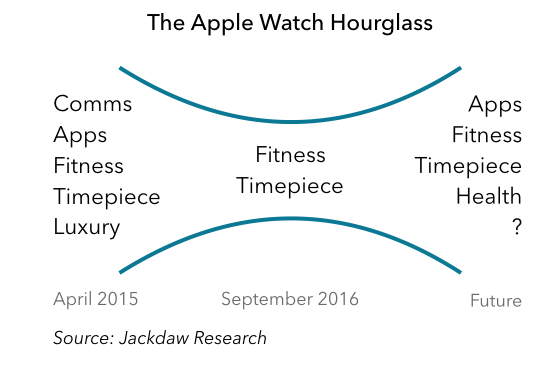
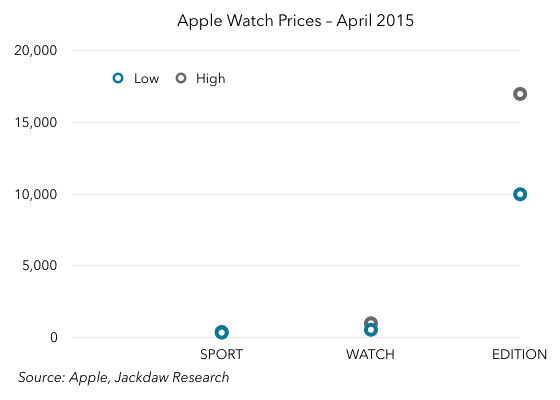
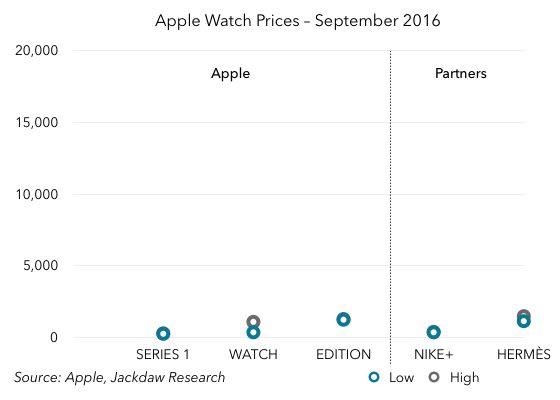

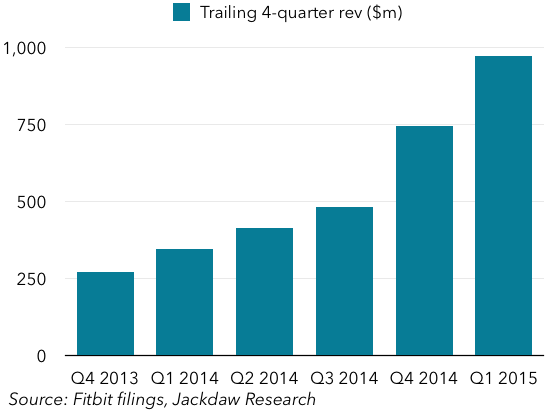
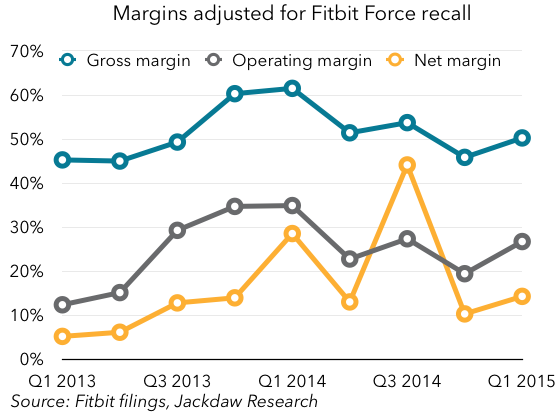
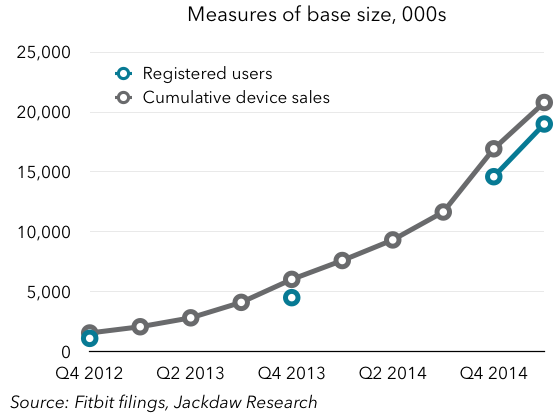
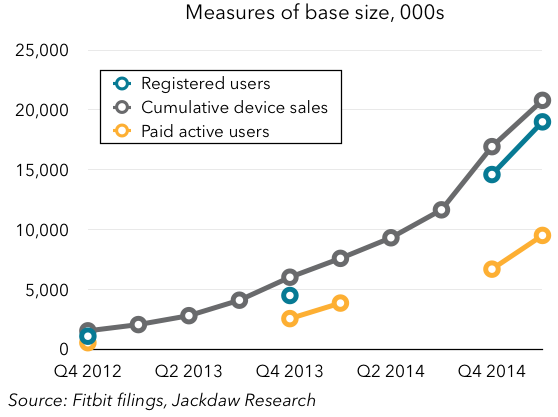 As you can see, the number of active users is far smaller than the number of registered users when added to that same chart. In the chart below, I’ve shown PAUs as a percentage of registered users at the four points in time where we have both numbers:
As you can see, the number of active users is far smaller than the number of registered users when added to that same chart. In the chart below, I’ve shown PAUs as a percentage of registered users at the four points in time where we have both numbers: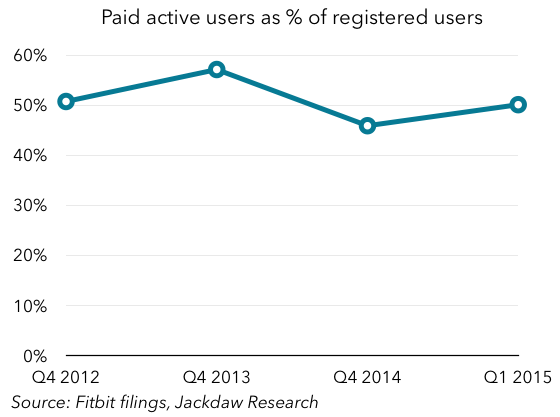 The number bounces around at about 50%, rising or falling a little over time but remaining remarkably constant. In one sense, that’s obviously fairly bad news – in addition to the fact that very few Fitbit buyers purchase a second device, it would appear that half of those who bought one stop using it after a period of time. However, there’s a flip side to this, if you’re looking for a silver lining, which is that the number isn’t falling over time. In other words, over two years ago, the number was 50%, and it still is. I’m actually a bit surprised by this, because all the early abandoners should still show up in the numbers and drag the overall retention rate down, but that doesn’t seem to be happening. What’s interesting is that this correlates closely with a survey I did last year about fitness trackers. The key question here was the individual’s experience with fitness trackers:
The number bounces around at about 50%, rising or falling a little over time but remaining remarkably constant. In one sense, that’s obviously fairly bad news – in addition to the fact that very few Fitbit buyers purchase a second device, it would appear that half of those who bought one stop using it after a period of time. However, there’s a flip side to this, if you’re looking for a silver lining, which is that the number isn’t falling over time. In other words, over two years ago, the number was 50%, and it still is. I’m actually a bit surprised by this, because all the early abandoners should still show up in the numbers and drag the overall retention rate down, but that doesn’t seem to be happening. What’s interesting is that this correlates closely with a survey I did last year about fitness trackers. The key question here was the individual’s experience with fitness trackers:
